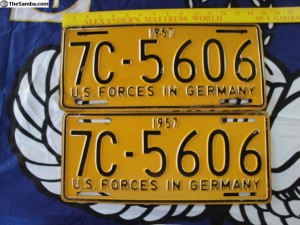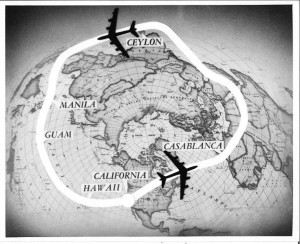by Robbin Laird
Recently, we have seen yet again, a US government report on the life cycle costs of the F-35 fleet from a 55 year perspective!
One could ask a simple question: what has mandated this question and why are they not fired?
There are many questions one can ask in life but wondering about the lifecycle costs of combat systems 55 years in the future is not one of them.
There can only be one purpose of posing this question: to come up with a PR number to club the program.
But analytically, we should laugh this effort off of the stage. Simply to pose the question should be met with ridicule, disdain or perhaps sorrow.
To give perspective, let us imagine that our predecessors had been so stupid or irrelevant. Let us go back in time – 55 years ago – and pretend that we are GAO analysts being tasked to look at the life cycle costs of weapon systems by the year 2012. (Hard to imagine President Eisenhower not calling such folks up to the White House for a barbecue, and not to eat ribs).
To put you in the mood, you can look at this 1957 video to give you a sense of what life was like in military aviation at that time.
This video Fifty Years of Aviation – The Big Picture 1957 – United States Army Documentary has a heroic perspective about it, and a sense of excitement about the future of aviation that today’s GAO analysts certainly would have difficulty sharing.
http://www.youtube.com/watch?v=yu-gVaeZmE4
So we might start this way.
We are not comfortable with the open-ended commitment of US forces in Germany to deter the Soviet Union. What will be the costs of such a commitment through 2012.

We estimate that the annual costs in 2012 dollars will be x trillions of dollars, and the uncertain nature of deterrence might well be called into question and the very open ended Eisenhower doctrine might be used by the Administration to justify even higher expenditures OUTSIDE of Europe.
Weapon systems have been developed to provide for deterrence in Europe, like the F-100 that provide sufficient deterrence to the Soviet Air Force, which in our estimate is not of the same quality or capability of the US and European Air Forces.
We see little justification for developing an untested aircraft, the F-4, whose early developmental problems and costs call into question the need for this aircraft.
We think testing should stop until the program can be demonstrated to be technologically mature and ready for deployment. Testing is dangerous and until all uncertainty can be driven out of the program, we think the testing should cease and desist.
We also are concerned that this advanced weapon system will only be used by US forces which in turn further drive up the costs of the weapon system.
Our forcecast for the F-4 fleet through 2012 – a fleet of probably 800 aircraft – would be over the 55 year forecast to be nearly (you make it up) x dollars.
We are also concerned with the costs of nuclear warheads to be deployed by the US Army with the Redstone arsenal. The Eisenhower Administration is increasingly relying on nuclear weapons to provide for deterrence and the costs of the development, deployment and maintenance of these weapons has not been fully clarified. Until clarification is provided to the Congress and the GAO, we think the Eisenhower Administration policy should be slowed down to permit proper oversight.
And the development of the new Jupiter missile as well provides a significant uncertainty over the costs of deploying a new system of nuclear deterrence.
By combing a projected Redstone with Jupiter arsenal, fully configured for combat, we would project over 55 years – including life cycle costs – that a European based nuclear combat force would cost ((you make it up) x dollars.
http://www.youtube.com/watch?v=SKCUcSxHwLQ
Well I will stop for now. It is hard to have so much fun.
But what might the GAO analysts of 1957 have missed. Well several technological revolutions – the internet, communications revolutions, the electronics revolutions, the fall of the Soviet Union, a shifting role for nuclear weapons, and the spectacular success of the F-4 program world wide.

Just a few small problems facing the analysts; so let us just get on with manufacturing the F-35 and quit playing analytical games that only undercut American and allied capabilities.
Or at least let the proponents of the 55 year projection stand up, be counted, and laughed off the stage. Oh by the way, the price of gas in 1957 was 24 cents, high for the time.
Elvis got his draft letter in 1957.
http://elvispresleytcb.50webs.com/usarmy.html
And the US Forces in Germany license plate:
http://www.thesamba.com/vw/classifieds/detail.php?id=1279629

